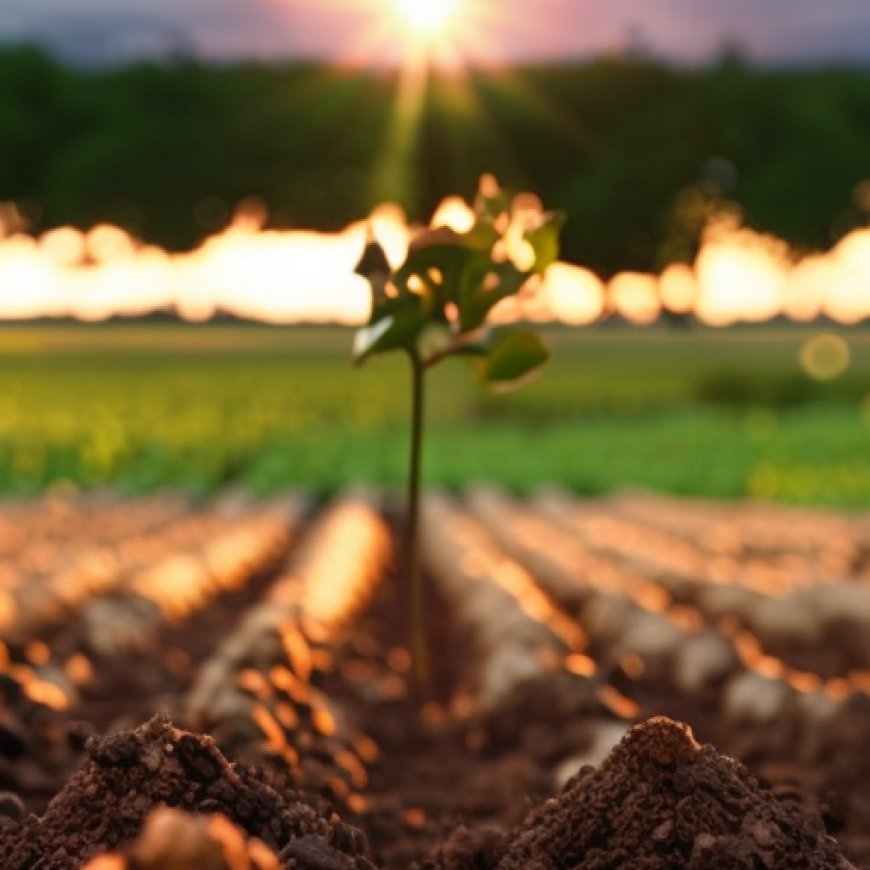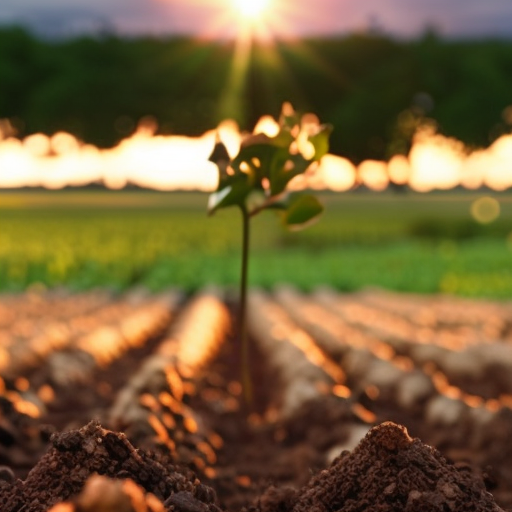Soil health reimagined: Key practices for a thriving agricultural future
Soil health reimagined: Key practices for a thriving agricultural future Potato News Today


Soil Health: Thriving Over Surviving
This article was written by Helen Holman, Head of Communications and Marketing, Emerald Research and is republished here with permission. Original article: Soil health: Thriving over surviving
Introduction
Soil health has gained significant attention in recent years, becoming a key focus in agriculture, sustainability, and politics. To farmers and growers, it should mean more than just survival. It should encompass the ability of soil to thrive and support maximum production year after year, especially considering the increasing nutritional demands of the world and the challenges of desertification.
Sustainable Development Goals (SDGs)
The concept of soil health aligns with several Sustainable Development Goals (SDGs), including:
- Goal 2: Zero Hunger
- Goal 13: Climate Action
- Goal 15: Life on Land
Key Indicators of Thriving Soil
A thriving soil has five key indicators:
- Soil structure – A healthy soil will have a good ’tilth’ with ample pore spaces for water drainage and air movement. It allows roots to grow and expand easily.
- Soil chemistry – Factors such as pH, nutrient availability, anion storage capacity, and cation exchange play a crucial role in soil health.
- Organic matter – The level of plant and animal tissue at various stages of decomposition is important. Ideally, mineral soils should have organic matter between 3% and 6%.
- Soil biology – A thriving soil contains a diverse range of living organisms that decompose organic matter and provide nutrients for crop growth.
- Water filtration, retention, and movement – The ability of water molecules to move through the soil is essential to prevent water logging and facilitate proper water movement.
The importance of soil management and organic matter is recognized in the Sustainable Farming Incentive, specifically in module SAM1, which encourages farmers to complete a Soil Management plan and assess soil organic matter. This initiative allows British farmers to claim financial incentives for undertaking soil analysis.
Improving Soil Health
Improving soil health requires dedication and effort. Here are three key actions that can make a difference:
1. Building Organic Matter
To enhance soil health, it is crucial to increase the level of organic matter. If the organic matter in mineral soils is below 3%, several methods can be employed, including min-till or no-till cultivations, application of organic manures, composts or digestates, and incorporating cover crops into the rotation.
Minimizing excess soil nitrogen levels also contributes to organic matter retention, as high nitrogen levels can accelerate its breakdown.
Soil organic matter consists of plant residues, living microbial biomass, and stable soil organic matter (humus). It plays a vital role in soil fertility, structure, water infiltration, nutrient supply, and microbial activity.
2. Promoting Active Microbial Communities
A healthy microbial community is essential for soil health. Poor cultivation practices and excessive use of inputs like fertilizers, fungicides, nematicides, and insecticides can impair microbial populations. Non-toxic bioactive control measures are emerging to address issues like the rise of pests such as wireworm.
Microbes play a crucial role in nutrient availability and soil health. They help release nutrients from organic matter and improve soil chemistry. Supplementing the soil with native UK microbial mixes at planting can enhance microbial activity.
3. Understanding Soil Chemistry
While nitrogen, phosphate, and potassium are commonly understood elements in soil chemistry, crops require 17 other elements for optimal growth. The availability of these elements varies, and their interrelationships with soil factors like pH, organic matter, cations, and microbial activity influence crop nutrient availability.
Regular soil testing is necessary to understand these interrelationships and make informed decisions about nutrient supplementation. Optimized growth programs can be developed to fill nutrient gaps in the soil’s natural availability, reducing input waste.
Conclusion
Soil health is crucial for sustainable agriculture and aligns with various SDGs. It requires ongoing management and is the foundation for successful crop production. By focusing on building organic matter, promoting active microbial communities, and understanding soil chemistry, farmers can improve soil health and contribute to a more sustainable future.
Author: Helen Holman, Head of Communications and Marketing, Emerald Research
Original article: Soil health: Thriving over surviving
Contact:
hholman@emeraldresearchltd.com
Helen has 20 years’ experience within the business to business sector working in a diverse range of multinational industries.
Photo: Credit Helen Holman/Emerald Research
SDGs, Targets, and Indicators Relevant to the Article
1. Which SDGs are addressed or connected to the issues highlighted in the article?
- SDG 2: Zero Hunger – The article discusses the importance of improving soil health to meet the world’s increasing nutritional demands.
- SDG 12: Responsible Consumption and Production – The article emphasizes the need for productive agricultural land to thrive in order to enable maximum production year on year.
- SDG 15: Life on Land – The article focuses on soil health and its ability to sustain plants, animals, and humans as part of Earth’s ecosystem.
2. What specific targets under those SDGs can be identified based on the article’s content?
- SDG 2.4: By 2030, ensure sustainable food production systems and implement resilient agricultural practices that increase productivity and production, that help maintain ecosystems, that strengthen capacity for adaptation to climate change, extreme weather, drought, flooding, and other disasters, and that progressively improve land and soil quality.
- SDG 12.4: By 2020, achieve the environmentally sound management of chemicals and all wastes throughout their life cycle, in accordance with agreed international frameworks, and significantly reduce their release to air, water, and soil in order to minimize their adverse impacts on human health and the environment.
- SDG 15.3: By 2030, combat desertification, restore degraded land and soil, including land affected by desertification, drought, and floods, and strive to achieve a land degradation-neutral world.
3. Are there any indicators mentioned or implied in the article that can be used to measure progress towards the identified targets?
- Indicator 2.4.1: Proportion of agricultural area under productive and sustainable agriculture.
- Indicator 12.4.1: Number of parties to international multilateral environmental agreements on hazardous waste, including their disposal.
- Indicator 15.3.1: Proportion of land that is degraded over total land area.
Table: SDGs, Targets, and Indicators
| SDGs | Targets | Indicators |
|---|---|---|
| SDG 2: Zero Hunger | Target 2.4: By 2030, ensure sustainable food production systems and implement resilient agricultural practices that increase productivity and production, that help maintain ecosystems, that strengthen capacity for adaptation to climate change, extreme weather, drought, flooding, and other disasters, and that progressively improve land and soil quality. | Indicator 2.4.1: Proportion of agricultural area under productive and sustainable agriculture. |
| SDG 12: Responsible Consumption and Production | Target 12.4: By 2020, achieve the environmentally sound management of chemicals and all wastes throughout their life cycle, in accordance with agreed international frameworks, and significantly reduce their release to air, water, and soil in order to minimize their adverse impacts on human health and the environment. | Indicator 12.4.1: Number of parties to international multilateral environmental agreements on hazardous waste, including their disposal. |
| SDG 15: Life on Land | Target 15.3: By 2030, combat desertification, restore degraded land and soil, including land affected by desertification, drought, and floods, and strive to achieve a land degradation-neutral world. | Indicator 15.3.1: Proportion of land that is degraded over total land area. |
Behold! This splendid article springs forth from the wellspring of knowledge, shaped by a wondrous proprietary AI technology that delved into a vast ocean of data, illuminating the path towards the Sustainable Development Goals. Remember that all rights are reserved by SDG Investors LLC, empowering us to champion progress together.
Source: potatonewstoday.com

Join us, as fellow seekers of change, on a transformative journey at https://sdgtalks.ai/welcome, where you can become a member and actively contribute to shaping a brighter future.







